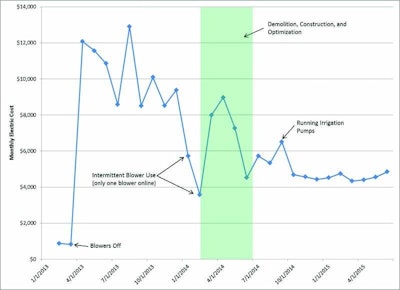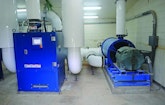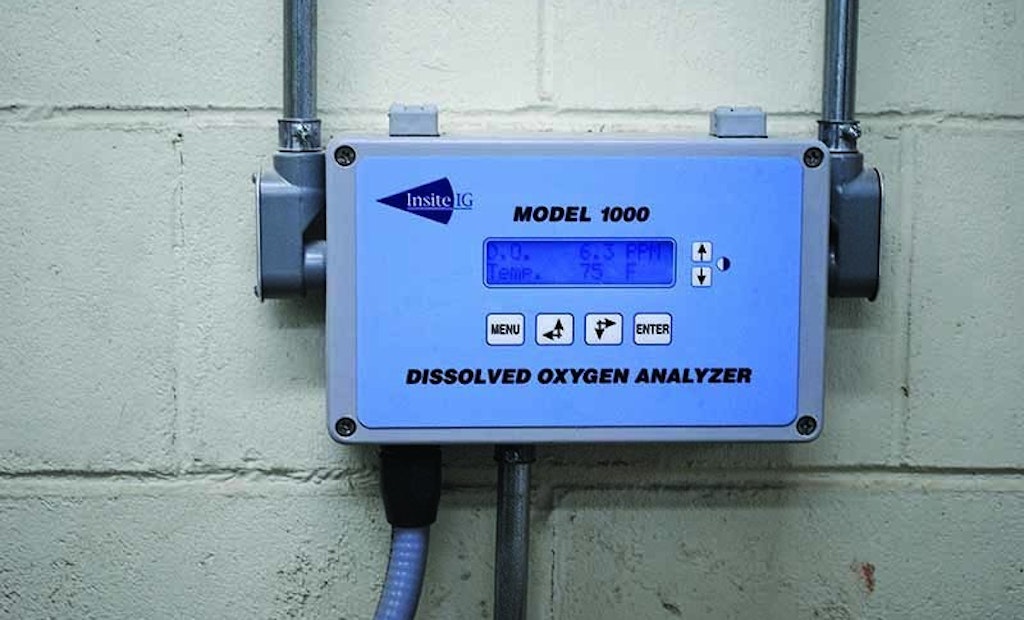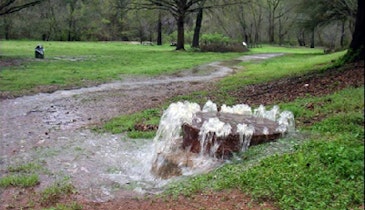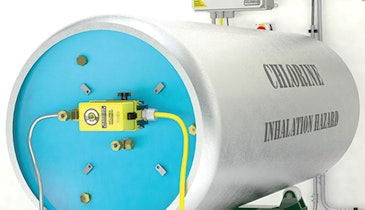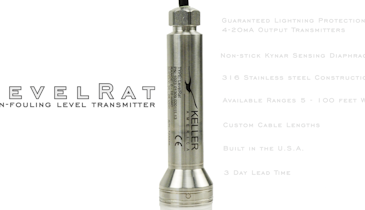Interested in Treatment?
Get Treatment articles, news and videos right in your inbox! Sign up now.
Treatment + Get AlertsThe Fredericksburg (Iowa) Wastewater Treatment Plant has faced challenges from change in its industrial flow and from upgrades to aging equipment.
A key operating objective has been to limit electricity costs while still providing adequate aeration for treatment. In 2014, as part of a plant upgrade, the city replaced two old centrifugal blowers with a pair of turbo blowers outfitted with variable-frequency drives.
The new configuration enables more effective control of dissolved oxygen concentrations in the plant’s three aerated lagoons. It is projected to save $30,000 per year on electricity and has ended an intermittent odor issue caused by low oxygen conditions in the lagoons.
Flexible operation
Fredericksburg, in northeast Iowa, is home to just over 900 residents. Its treatment plant, designed for an average dry-weather flow of 0.35 mgd, is unique in having three possible discharge modes.
The plant was designed and built in the early 1980s to treat wastewater from the city and a large cheesemaking operation. It originally included two 200 hp centrifugal blowers to provide air for an aerated lagoon facility with one treatment cell (24-day detention), two large aerated storage cells (135-day total detention) and a double center-pivot irrigation system (no discharge to surface waters).
Since the plant went online, conditions have changed considerably. The cheesemaker left the city and two other industries moved in. The plant has been modified to allow much more versatile operation. In 1994, the plant’s firm blower capacity was increased by 100 percent with the addition of a third 200 hp centrifugal blower. An outfall line, discharge management structure and flow rate control system were added in 2001 to permit controlled discharge to the East Fork of the Little Wapsipinicon River.
Today, the plant can operate as an aerated discharge lagoon (continuous discharge), a controlled discharge facility, or a no-discharge facility (effluent to irrigation only). The effluent can be beneficially used for crop production, stored during periods of natural environmental stress in the receiving stream, or discharged when additional flow would enhance the stream.
Eye on electricity
With the addition of the river outfall, the plant was re-categorized as a continuous discharge aerated lagoon. However, because the cells have ample storage capacity, it operates mainly as a controlled discharge lagoon (discharged typically twice a year).
Because of the plant’s operational flexibility, operator Ray Armbrecht has used electricity consumption as a basis for controlling the aeration blowers, which are often a plant’s largest power consumer. Armbrecht’s strategy was to find a balance between minimizing electricity costs and providing enough air to maintain proper wastewater treatment.
“For many years, the blowers were operated continuously Monday through Friday and turned off on the weekends to save energy when the plant loadings were less,” Armbrecht says. “The blowers were also turned off during the winter months when the lagoons were frozen over.”
Because the blowers could only operate fully on or fully off, this strategy did save on electricity. However, when the blowers were restarted, the plant often experienced odor problems for one or two days because of the oxygen-depleted environment in the lagoons.
As the two original blowers neared end of life, the city evaluated options for upgrading the equipment and increasing plant efficiency. Working with the Fehr Graham engineering firm, the city replaced the old blowers with two turbo blowers (Aerzen model TB150-0.8S). Replacement began in spring 2014, and the new blowers were online that summer.
Rapid results
The turbo units provide the same aeration capacity as the original blowers but draw only about 130 hp at full capacity. With variable-frequency drives for each turbo blower, Armbrecht can more efficiently match blower output to the plant’s oxygen needs.
With the turbo blowers in operation for less than a year, the city already had documented significant reductions in electricity demand (Figure 1) and energy consumed (Figure 2).
Bryan O’Day, mayor of Fredericksburg, observes, “Based on the first year’s figures, we are seeing more than a 30 percent reduction in electricity demand.”
Armbrecht strongly supported the high-efficiency blowers: “Having come from an industrial plant where our team always focused on efficiency, I strongly encouraged the city to consider blowers that could reduce our electrical demand. Even though the capital costs were higher, the city and its taxpayers would see the benefit in the long run.
“Because of the increased efficiency, we now provide air to the lagoons 24 hours a day, seven days a week. The continuous air supply has eliminated our odor problems — an added benefit due to our proximity to the golf course.” A dissolved oxygen meter allows Armbrecht to constantly monitor lagoon oxygen levels.
Armbrecht plans to continue pursuing ways to increase plant efficiency and performance. In the blower building, he recently designed a filter system to prevent dust buildup and maintain a clean environment. He is also working to address infiltration in the collections system and plans to evaluate using effluent to irrigate the nearby golf course.
About the authors
Jeremy S. Bril, Ph.D., EIT, (jbril@fehr-graham.com) is a staff engineer, and George L. TeKippe, PE, PLS (gtekippe@fehr-graham.com) is a senior project manager with the Fehr Graham engineering and environmental consulting firm with offices in Iowa, Illinois and Wisconsin.
